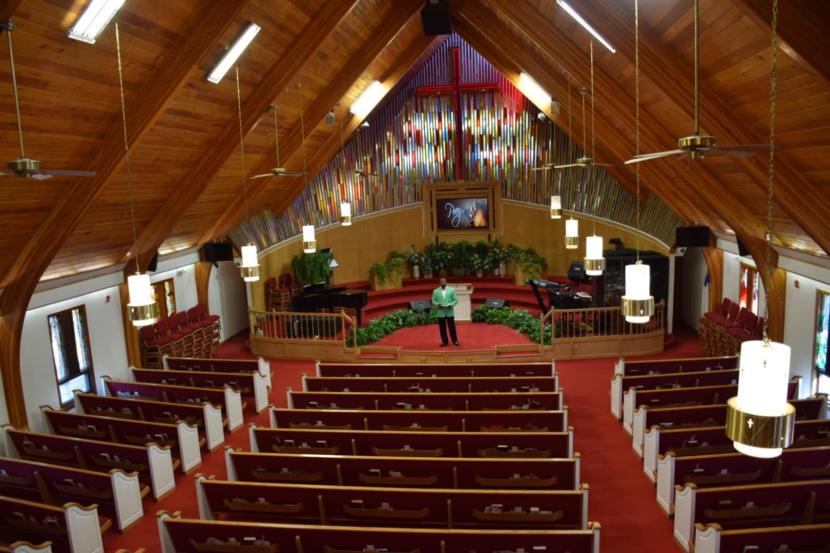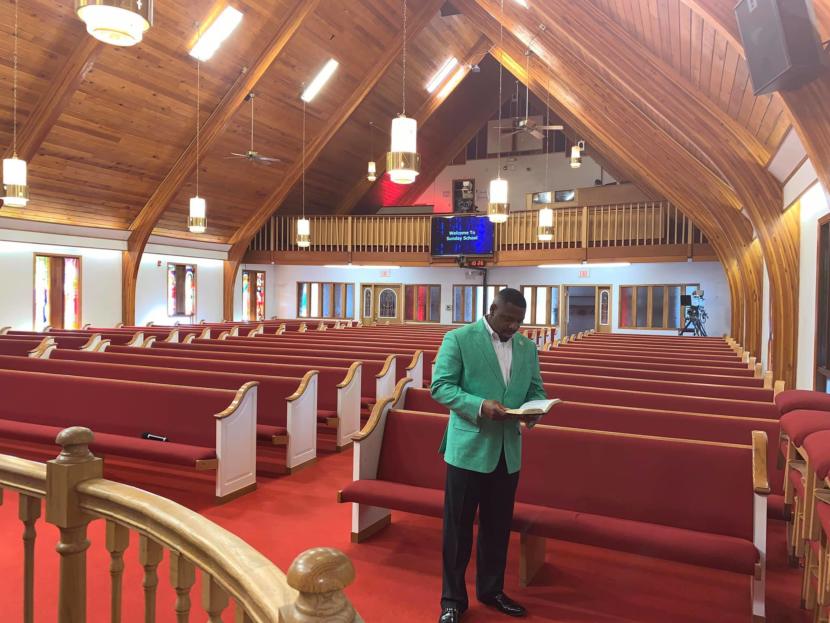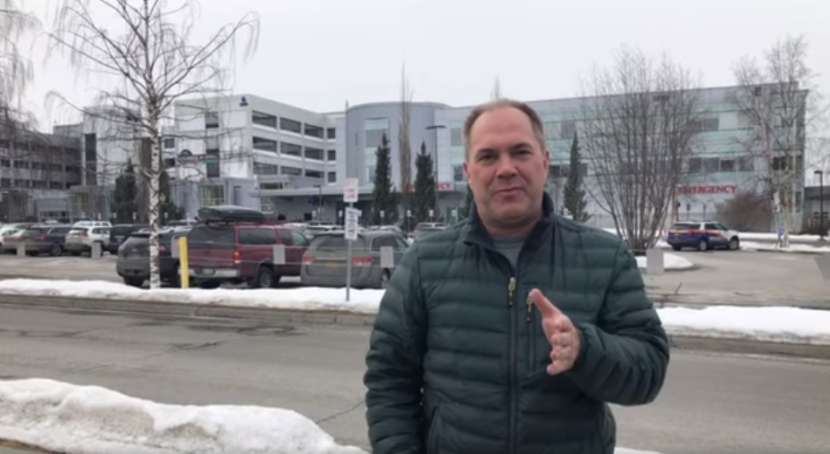
When Undra Parker, the pastor at Shiloh Missionary Baptist Church in Anchorage, made the switch to online services, he said it felt different. Normally, in black churches, there’s a lot of interaction with the sermon.
“There’s a lot of ‘amens,’ ‘save us,’ ‘do it,’ ‘preach,’ — that talk-back you get,” Parker said. “And it’s a little different when you don’t have that.”
Now, Parker is preaching to a mostly empty church, save for the few staff members needed to produce the online service, which is streamed through Facebook Live and other platforms.
It’s hard not being able to see the reactions of congregants, not being able to hear the voice of the choir and not shaking hands at the end of service, he said.
Matt Schultz, at the First Presbyterian Church of Anchorage, also said he’s struggling to adapt to the new online sermons.
“It’s strange, man, because I like to make a lot of jokes, and you pause for laughter and there’s no laughter. Even on the good jokes, there’s no laughter — and that’s kind of funny,” he said.
But Parker, Schultz and others have also been adapting quickly to the changed worship landscape. They’re even learning to appreciate it.
“You know, it’s not bad,” said Schultz. “It’s just new, and you learn in the comments what people like. People are very, very free to criticize your work via email. You can get a lot of feedback that way.”

Part of the trick has been learning new ways to engage with congregants digitally.
Rabbi Abram Goodstein of Congregation Beth Sholom said he realized that, in some ways, digital interaction can be more intimate than in-person sermons. For example, in the Mi Shebeirach prayer of healing or in the Mourner’s Kaddish, instead of asking people to say the names of their loved ones aloud, Goodstein said he has them post in the live comments.
“I see names pop up on the comments. People want to say the names they’re thinking of, and everyone can see it. So, it’s an exciting format to show a person who you are thinking of who needs healing, or a loved one who you knew who’s passed away,” he said.
The new format is also helping Goodstein fine-tune his own sermons using the digital analytics.
“In Facebook Live, people can react with buttons,” he said. “When it’s over, I can see when the most reactions happen, giving me an idea of what’s most popular about my worship service in a really incredible way.”
The technology is used in other ways as well. Churches around the state are seeing check-ins from places they didn’t even expect — and from people who might be turning to faith now with a particular intensity.
The ChangePoint Alaska church has seen its web viewership roughly double — from 2,000 to 4,000 — even though they’ve had an active webcasting service for years. They’ve seen viewers tune in from states across the country, and from as far away as Central America and Europe. They’ve been communicating with missionary partners in Italy and hearing dire news about the virus, as well as with former members who just pop into livestreams and chat rooms.
While these streams have existed for years, the church is also experimenting with new adaptations. One of the ideas is a daily prayer streamed over Facebook. The church is calling the 7 p.m. meetings “The COVID-1900.”
“We’re getting together for prayer, and we’re trying to pray in response to the things we’re learning about daily and that people are experiencing daily,” says Michael Warren, ChangePoint’s community and care pastor.

It’s especially important — and challenging — to keep elderly members of the congregation involved. Not only are people over 65 at higher risk of the effects of COVID-19, but they also tend to be less proficient technologically.
Tony Schultz at the Anchorage Lutheran Church said his staff identified the need to keep elderly members involved early on — and quickly found a solution.
“One of our members who provides the camera work for anything that we do is able to make DVDs. We have some people close by that we drop (them) off into their mailbox, and let them know it’s there,” he said. “Others, we’re mailing.”
There are plenty of ways to connect the global pandemic to scriptural lessons. Religious leaders said they’re tying sermons to themes of trials of faith, the unity of the community and keeping hope in hard times.
They’re also trying to be leaders in conveying practical messages from public health officials. While some churches in other parts of the country made headlines by defying public health mandates against large gatherings, most faith institutions around Alaska said they’re in lockstep with the recommendations.
“We are a faith community, so we do honor and still trust in God. But we use wisdom and we heed the mandates, the recommendations, the advisories, all of the things that will come down from our local, state and national officials to hunker down and to heed the six-foot distance,” said Parker, of Shiloh Missionary Baptist.
Religious institutions are getting as creative as they can in conveying those messages to their audiences.
In Fairbanks, the Unitarian Universalist Fellowship of Fairbanks produced a video with lyrics like: “There’s lots of stuff to watch online while keeping safe from sinus ills/ In this case it is better to enjoy Netflix minus chills.” The two performers hold a six-foot-long rod to make sure they’re keeping proper social distance.
But the humor underlies what, in many cases, are serious emotional and spiritual questions brought to light in a time of crisis. While many church leaders said they’ve seen more resilience than hope, and more offers to help neighbors than requests for assistance, they know that faith institutions play a special role in addressing deep spiritual concerns.
“I think when people are facing trouble, it’s a time when people are particularly open to spiritual kinds of things, because it makes them ask those kinds of questions,” said Warren, of ChangePoint, “As a church, we want to be ready to answer those questions in a clear and a winsome way, so that people have hope and they’ve got a vision that they can hang onto as we go through this.”
